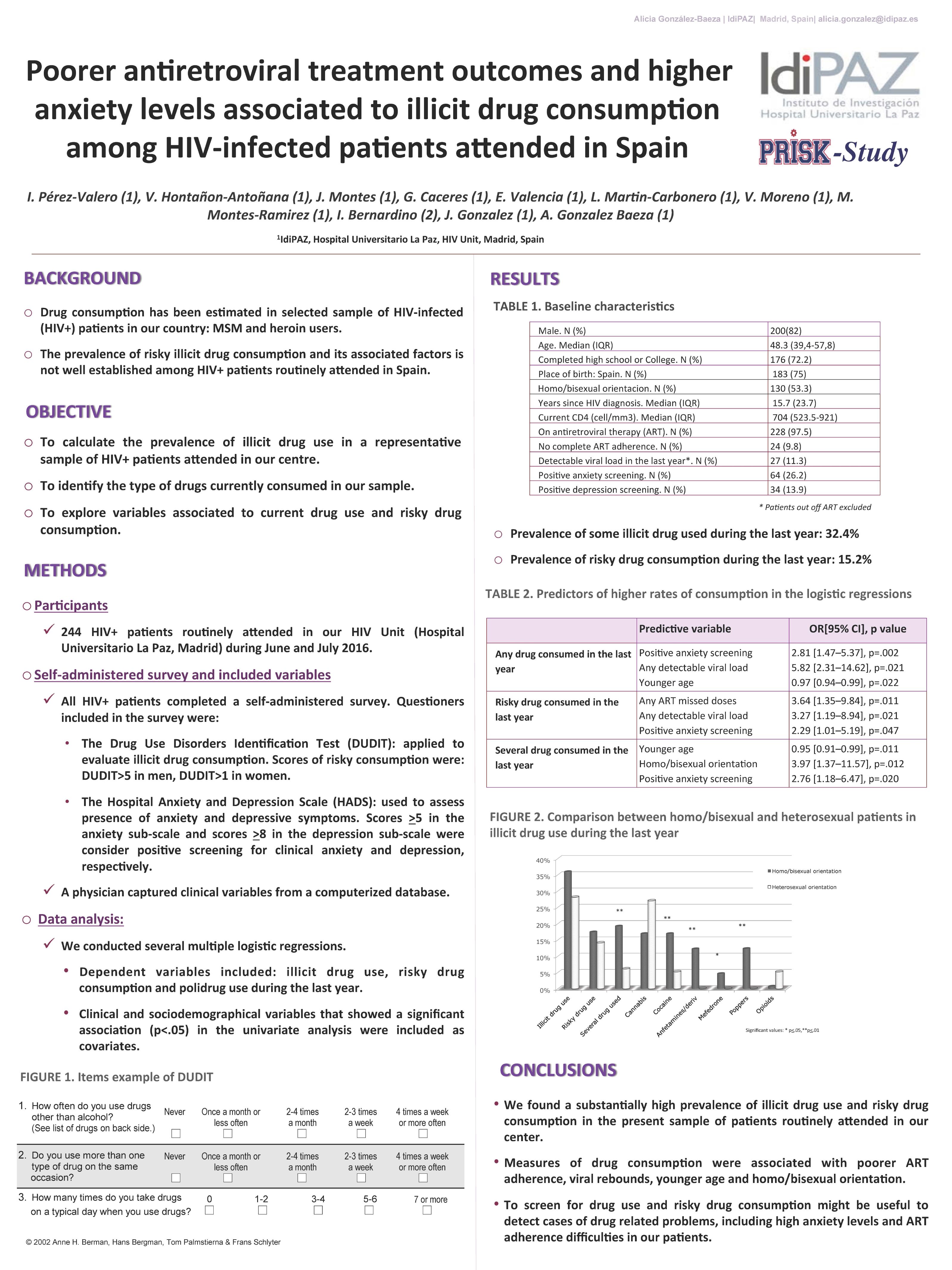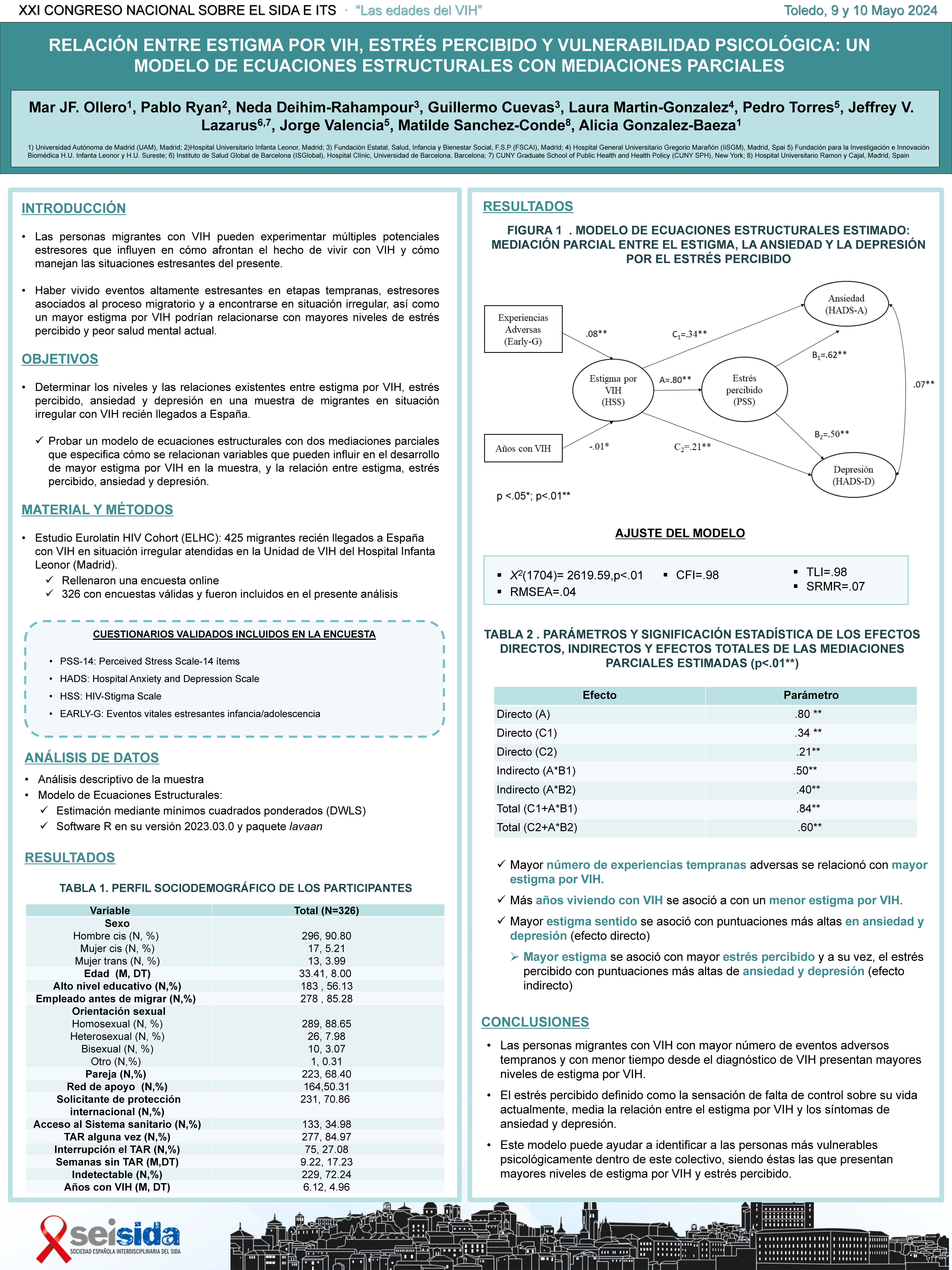Resumen
Background: The prevalence of illicit drug consumption and its associated factors is not well established among HIV-patients attended in Spain. Materials and methods: All the participants completed the self-administered Drug Use Disorders Identification Test to screen for risky drug use (DUDIT>5 in men;DUDIT>1 in women). They reported the type of illicit drugs used and completed the Hospital Anxiety and Depression Scale (HADS). We calculated the association between clinical/demographical and consumption variables. Multiple logistic regressions were conducted including risky drug use, use of drugs and polydrug use in the last year as dependent variables. Covariates included clinical/ demographical that showed association (p<.10) with each dependent variable in the univariate analysis.
Results: 244 participants were included in the analysis. The majority were middle age (mean: 46.4 years), male(82%), high school or college educated(72,2%) and Spanish-born (75%). The 97,5% received ART. Of all the participants, 32,4% reported consumption of any illicit drug during the last year: marijuana/cannabis(21.7%), cocaine(11.5%), poppers(6.6%), amphetamine derivatives(6.2%), opioids(2.9%), ketamine(2%), GHB(1.6%) and pentadone(0.8%).The prevalence of risky drug consumption was 15,2%. The 23.4% of the drug consumers received boosted-ART agents. The use of any drug in the last year was independently associated with lower age (0.97 [0.94–0.99],p=.022), higher anxiety symptomatology (2.81[1.47–5.37],p=.002) and detectable viral load in the last year (5.82[2.31–14.62],p=.001) whereas, risky drug use were associated with some detectable viral load in the last year(3.27[1.19–8.94],p=.021), higher anxiety symptoms (2.29[1.01–5.19],p=.0.047) and poorer ART adherence(3.64[1.35–9.84],p=.011). Homo-and bisexual participants (3.97[1.37–11.57],p=.012), those younger(0.95[0.91–0.99],p=.011), with a positive screening for anxiety (2.76[1.18–6.47],p=.020) had higher rates of polydrug use during the last year. Homo-bisexual participants had higher rates of polydrug use, and amphetamine derivates, mephedrone, cocaine and popper use in the last year. Comparison between homo/bisexual and heterosexual patients are in the Table 1. Conclusion: We found a substantially high prevalence of illicit drug use and risky drug use. Measures of consumption were associated with poorer ART adherence, viral rebounds, age or sexual orientation. We show updated data of drugs consumption in a HIV-sample. Table. Comparison between homo/bisexual and heterosexual patients
Autoría:
PÉREZ VALERO, Ignacio;
HONTAÑÓN ANTOÑANA, Víctor;
MONTES, J.;
CÁCERES, G.;
VALENCIA, Eulalia;
MARTÍN CARBONERO, Luz;
MORENO, V.;
MONTES RAMÍREZ, María Luisa;
BERNARDINO DE LA SERNA, José Ignacio;
GONZÁLEZ, J.;
GONZÁLEZ BAEZA, Alicia
Autoría institucional:
Hospital Universitario La Paz






